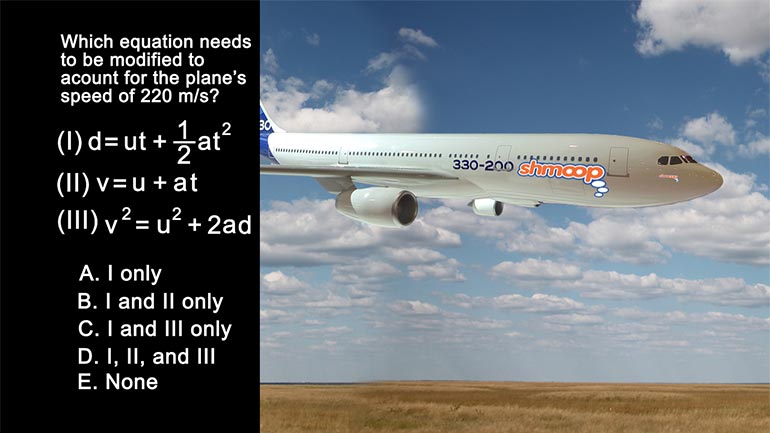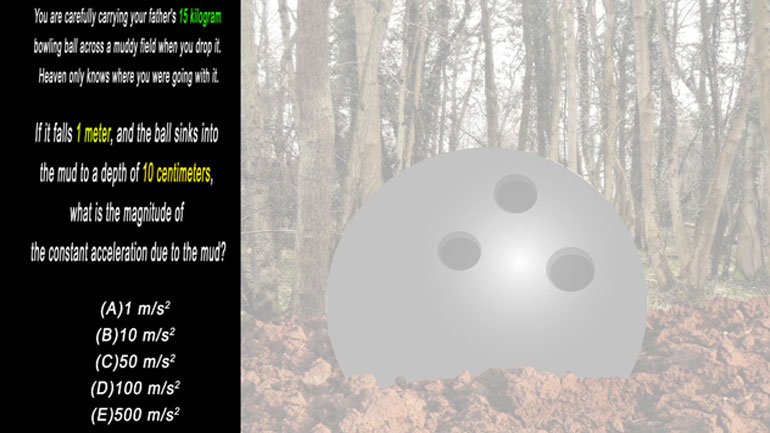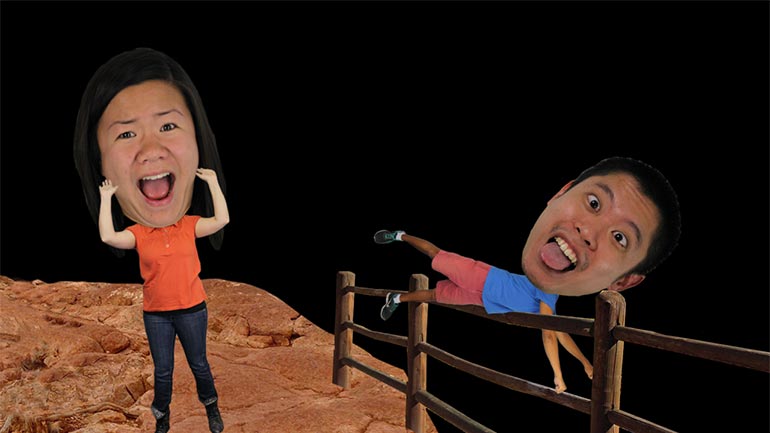ShmoopTube
Where Monty Python meets your 10th grade teacher.
Search Thousands of Shmoop Videos
AP Physics B/C Videos 8 videos
AP® Physics B: Newtonian Mechanics Drill 1, Problem 3. With what acceleration does lunch arrive?
AP Physics C: Newtonian Mechanics Drill 1, Problem 1. Which of Newton's equations of motion would have to be modified to account for the airplane's...
Newtonian Mechanics Drill 1, Question 1. What is the magnitude of the constant acceleration due to the mud?
AP Physics B 2.1 Newtonian Mechanics 256 Views
Share It!
Description:
AP Physics B: Newtonian Mechanics Section Drill 2, problem 1. What is the acceleration due to gravity for objects dropped near the surface of Europa?
Transcript
- 00:03
Here's your shmoop du jour... Europa, one of the moons of Jupiter, has a
- 00:07
mass that is about one tenth that of Earth and a radius that is about one quarter of Earth's.
- 00:13
In terms of g, as measured on Earth, what is the acceleration due to gravity for objects
- 00:22
dropped near the surface of Europa? Here are the possible answers...
- 00:29
Ok, what is this question asking?
Full Transcript
- 00:31
Well, it's not asking about the gravitational pull in Europe, for starters.
- 00:34
Even if some of their hair-dos over there do seem to defy gravity... they're pretty
- 00:38
much abiding by the same laws of physics that we do in the States.
- 00:41
Instead, the focus is on Europa, one of Jupiter's moons.
- 00:44
To solve this problem, we use Newton's law of gravitation:
- 00:48
For our equation, we use
- 00:50
m1g... the force of gravity on earth... is equal to big G, the gravitational constant,
- 00:56
times m1 times m2 divided by r squared.
- 01:04
In this equation, m represents the mass of an object,
- 01:08
and r is the distance between the two objects.
- 01:12
We can divide the m1... your mass...
- 01:16
out of both sides...
- 01:18
...and here's what we get: the acceleration of gravity on earth is equal
- 01:23
to the Gravitational constant...
- 01:25
...multiplied by the mass of the Earth all over the radius squared.
- 01:31
We can write this same equation for Europa.
- 01:36
Now, by substituting the values for Europa we can get the acceleration of gravity on that moon.
- 01:41
The mass for Europa is one tenth that of Earth, so we multiply mEarth by .1.
- 01:48
The distance between the center of Europa and whatever this slippery object is that
- 01:51
we've dropped... is one fourth of Earth, so we multiply r by .25.
- 01:57
We have to make sure we multiply R by .25 before we square it.
- 02:01
Simplifying what we have, we get that the gravity on Europa is equal to .1 over .25
- 02:07
squared or 1.6 times the gravity of Earth or 1.6 times stronger.
- 02:13
Answer (E).
- 02:15
Maybe it's time for someone to invest in a utility belt...
Related Videos
AP® Physics B: Newtonian Mechanics Drill 1, Problem 3. With what acceleration does lunch arrive?
AP Physics C: Newtonian Mechanics Drill 1, Problem 1. Which of Newton's equations of motion would have to be modified to account for the airplane's...
Newtonian Mechanics Drill 1, Question 1. What is the magnitude of the constant acceleration due to the mud?
AP® Physics B: Newtonian Mechanics Drill 2, Problem 2. If she is to stay on a course due north, at what angle must she point her plane?
AP® Physics B: Newtonian Mechanics Drill 2, Problem 3. What is the coefficient of friction between the biscuit and the court?







